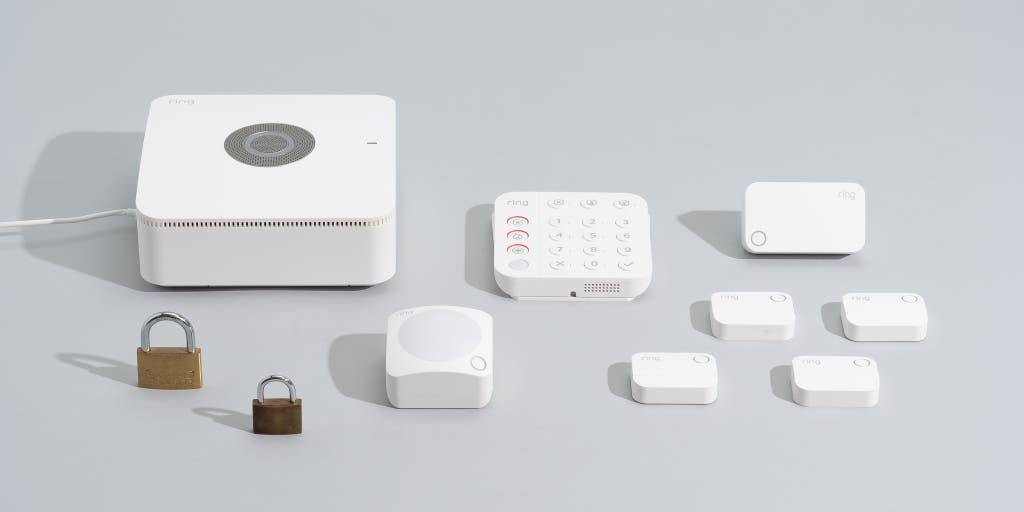Empowering Safety: Home Security for Independent Women
Contents
- 1 Welcome, Readers!
- 2 Introduction
- 3 Strengths of Empowering Safety
- 4 Weaknesses of Empowering Safety
- 5 Table: Empowering Safety: Home Security for Independent Women
- 6 Frequently Asked Questions (FAQs)
- 6.1 FAQ 1: What are some easy-to-implement security measures for independent women?
- 6.2 FAQ 2: How can self-defense training empower women?
- 6.3 FAQ 3: Are smart home devices effective in enhancing security?
- 6.4 FAQ 4: How can women create a sense of community for enhanced safety?
- 6.5 FAQ 5: What should women do in case of an emergency?
- 6.6 FAQ 6: How can women overcome cultural and social barriers when seeking help?
- 6.7 FAQ 7: Is personal security only the responsibility of women?
- 7 Conclusion
- 8 Closing Words
- 9 Author
Welcome, Readers!
Greetings, readers! In this article, we will explore the crucial topic of empowering safety, focusing specifically on home security for independent women. In today’s world, ensuring personal security is of utmost importance, and it becomes even more essential for women living alone. Therefore, it is vital to have a comprehensive understanding of effective home security measures and techniques that can empower women to feel safe and confident within their own spaces.
Introduction
In recent years, there has been a significant rise in the number of independent women living alone. While this is an empowering development, it also brings about unique challenges related to safety and security. Women deserve to feel safe and protected in their homes, and that is precisely where the concept of empowering safety comes into play.
Empowering safety aims to equip women with the tools and knowledge necessary to create secure environments within their homes. By taking proactive measures and implementing effective security strategies, women can enhance their safety and regain a sense of control over their living spaces.
In this article, we will delve into the strengths and weaknesses of empowering safety for independent women. Additionally, we will provide you with a comprehensive table containing all the essential information you need to know about home security.
Strengths of Empowering Safety
1. Awareness and Preparedness: Empowering safety educates women about potential security threats and prepares them to handle various situations confidently. By understanding potential risks, women can develop proactive strategies to minimize vulnerabilities.
2. Tailored Solutions: Empowering safety acknowledges that women have unique security concerns. It offers customized solutions that address gender-specific issues, ensuring women’s safety needs are fully met.
3. Self-Defense Techniques: This approach emphasizes the importance of self-defense training, equipping women with physical and mental skills to protect themselves in case of an emergency.
4. Smart Home Technology: Empowering safety embraces the advancements in technology, promoting the use of smart home devices such as surveillance cameras, doorbell cameras, and motion sensors, which can enhance home security and provide peace of mind.
5. Community Support: Empowering safety encourages women to establish strong connections with neighbors and take part in community safety initiatives. By fostering a sense of unity, women can rely on each other for support and assistance.
6. Emergency Preparedness: This approach emphasizes the importance of having an emergency plan in place. Women are guided on how to develop evacuation strategies, assemble emergency kits, and stay updated on local emergency services.
7. Mental and Emotional Well-being: Empowering safety also focuses on the mental and emotional well-being of women. It provides resources and support networks to help women cope with the psychological impact of living alone and mitigate fears.
Weaknesses of Empowering Safety
1. Financial Constraints: Implementing comprehensive security measures can involve substantial costs, which may pose a challenge for women on limited budgets. It is essential to explore affordable options without compromising safety.
2. Technological Dependencies: While smart home technology can enhance security, it also brings potential vulnerabilities, such as hacking and system malfunctions. Adequate precautions and regular updates must be taken to mitigate these risks.
3. Limited Reach: Despite efforts to reach a wider audience, empowering safety might not effectively reach women in remote or underserved areas. More inclusive strategies are necessary to ensure all women have access to vital safety information.
4. Cultural and Social Barriers: Certain cultural and social norms may discourage women from seeking help or openly discussing safety concerns. Empowering safety should take these barriers into account and provide culturally sensitive resources and support.
5. Lack of Legislation: In some jurisdictions, laws regarding stalking, harassment, and domestic violence may be insufficient or poorly enforced. Empowering safety should advocate for stronger legal protections for women.
6. Overreliance on Individual Actions: Empowering safety emphasizes personal responsibility, but societal changes and collective efforts are equally crucial. Addressing the root causes of insecurity can ensure long-term safety for independent women.
7. False Sense of Security: While empowering safety provides women with valuable skills and tools, it is important to understand that no security measure can offer absolute protection. This awareness helps women remain vigilant and adaptable.
Table: Empowering Safety: Home Security for Independent Women
| Category | Aspect | Description |
|---|---|---|
| Physical Security | Doors and Windows | Proper locking mechanisms, reinforced materials, and safety precautions |
| Physical Security | Outdoor Lighting | Strategic placement of lights to deter intruders |
| Physical Security | Surveillance Systems | Installation and use of cameras and security systems |
| Physical Security | Secure Entry Points | Effective ways to secure entrances and limit unauthorized access |
| Personal Safety | Self-Defense Training | Learning techniques to protect oneself physically and mentally |
| Personal Safety | Safety Apps | Utilizing smartphone apps for safety purposes, such as emergency alerts and tracking |
| Personal Safety | Escape Routes and Safe Rooms | Creating viable options for escape and secure areas within the home |
| Technological Solutions | Smart Home Devices | Integration of technology for improved security, including cameras and alarms |
| Technological Solutions | Home Automation | Automated systems for lights, locks, and surveillance |
| Community Engagement | Neighborhood Watch | Collaborating with neighbors to monitor and report suspicious activities |
| Community Engagement | Emergency Preparedness | Participating in community emergency response plans and initiatives |
| Community Engagement | Support Networks | Connecting with local organizations and support groups for assistance and resources |
| Legal Protection | Stalking and Harassment Laws | Understanding existing legal provisions and seeking necessary legal guidance |
| Legal Protection | Domestic Violence Support | Accessing shelters, helplines, and legal aid for domestic violence victims |
Frequently Asked Questions (FAQs)
FAQ 1: What are some easy-to-implement security measures for independent women?
Response: Implementing basic measures such as reinforcing doors and windows, installing motion sensor lights, and using deadbolt locks can significantly enhance security.
FAQ 2: How can self-defense training empower women?
Response: Self-defense training equips women with practical skills to protect themselves and boosts their confidence when faced with potential threats.
FAQ 3: Are smart home devices effective in enhancing security?
Response: Yes, smart home devices, like surveillance cameras and doorbell cameras, can serve as effective deterrents and allow remote monitoring.
FAQ 4: How can women create a sense of community for enhanced safety?
Response: Engaging with neighbors through neighborhood watch programs and participating in community safety initiatives fosters a collective sense of security.
FAQ 5: What should women do in case of an emergency?
Response: Women should develop emergency plans, create accessible escape routes, and stay informed about local emergency services in order to respond effectively in stressful situations.
Response: Empowering safety initiatives should provide culturally sensitive resources and support programs that encourage women to seek help while addressing cultural and social concerns.
FAQ 7: Is personal security only the responsibility of women?
Response: No, ensuring personal security is a collective responsibility. Empowering safety initiatives should work towards creating a safer society for all individuals.
Conclusion
In conclusion, empowering safety is a vital concept that focuses on enhancing home security for independent women. By raising awareness, providing tailored solutions, and promoting self-defense techniques and smart home technology, women can take proactive steps towards their own safety. Community engagement, legal protection, and considering individual strengths and weaknesses further contribute to empowering safety.
Remember, personal security is a shared responsibility. By implementing effective measures, fostering community support, and advocating for stronger legal protections, we can create a safer environment for all women living independently.
Take action today and empower yourself with the knowledge and tools to create a safe and secure home!
Closing Words
Empowering safety is a constant journey. While we strive to provide accurate and up-to-date information, it is essential to stay informed about the evolving landscape of security threats. Take the necessary precautions, but always trust your instincts and prioritize your well-being.
Note: The information provided in this article is for educational purposes only. It is not a substitute for professional advice. Always consult with security experts, law enforcement agencies, and legal professionals for personalized recommendations.










